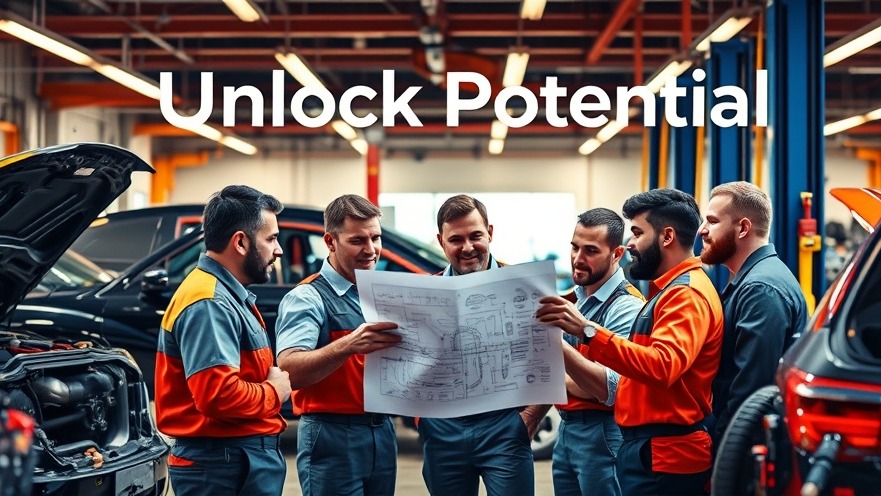
July Sales Show Automotive Resilience
In July 2025, the automotive industry demonstrated impressive resilience as new light-vehicle sales exceeded expectations. The National Automobile Dealers Association (NADA) reported that July's seasonally adjusted annual rate (SAAR) of sales reached 16.4 million units, a remarkable increase of 7.1% from June and a 3.7% rise from the previous year. This robust sales performance is particularly noteworthy given the significant challenges many dealerships faced last year due to a massive software outage that pushed some sales into July 2024.
The Shift to Electric Vehicles: Current Opportunities and Challenges
With tax incentives for electric vehicles (EVs) set to expire soon, there is a sense of urgency within the automotive market. NADA predicted heightened activity in the EV sector, and July's figures confirmed this trend with battery electric vehicle (BEV) sales rising by 22.7% from June 2025. However, when compared to July 2024, sales stagnated, indicating that the expansion of this market segment may not be as aggressive as anticipated.
Interestingly, plug-in hybrids, which also benefit from the EV tax credit, saw a slight decline in sales and market share year-over-year. Hybrids emerged as the leading alternative fuel option, boasting a significant 37.7% rise in sales compared to the previous year. This increasing consumer interest in hybrids could be a strategic opportunity for repair shop owners to expand their service offerings and expertise.
Understanding Market Dynamics: Incentives and Rising Costs
According to J.D. Power, average incentives per unit spiked to $3,051 in July, an increase from previous months and last year. With car prices swelling, monthly finance payments have also surged, now averaging $742—a hike of $12 compared to the previous year. Coupled with this is the rising finance rate that has reached 6.54%, marking an increase of 30 basis points since last year.
Despite strong July sales, NADA maintains a cautious stance by not adjusting the annual sales forecast of 15.3 million units. The automotive industry faces headwinds from tariffs that are adding approximately $4,275 in costs per vehicle. How manufacturers manage to cope with these price hikes without transferring the burden to consumers is a question that lingers. As fall approaches, NADA expects developments in OEM pricing strategies as the market transitions from 2025 to 2026 vehicle models.
Implications for Auto Repair Shops
For auto repair shop owners, the trends highlighted in July's sales figures present both challenges and opportunities. With rising vehicle prices and financing rates, consumers might turn to keeping their current vehicles longer. This shift could increase demand for maintenance and repair services, providing an avenue for shop owners to bolster their business.
Furthermore, as the market dynamics continue to evolve, being well-versed in the latest technologies – particularly related to hybrids and EVs – will be crucial. Shop owners may want to invest in training and tools specifically for servicing these advanced vehicles, as they will become more prevalent on the roads.
Looking Ahead: A Call to Adapt and Thrive
The automotive landscape is in constant flux, and businesses must adapt to sustain growth. Repair shop owners should embrace this evolution by exploring innovative service options, staying informed about market trends, and considering collaborations with local dealers to leverage the shifting landscape. By remaining proactive, shops can position themselves for success in this challenging environment.
In conclusion, July 2025's strong sales offers a glimpse of resilience in the automotive market despite looming obstacles. As the landscape evolves, shop owners must adapt their strategies to harness opportunities and prepare for the future.
 Add Row
Add Row  Add
Add 




Write A Comment